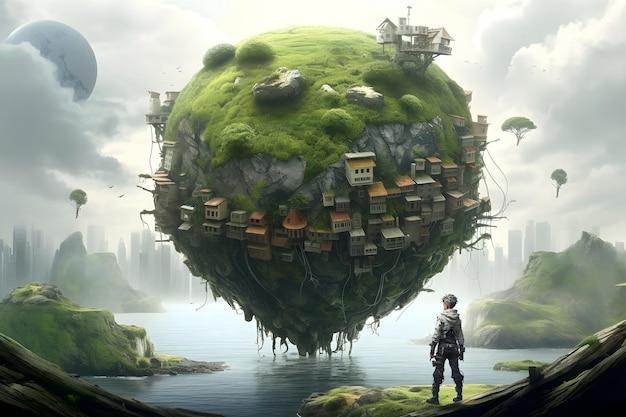Sustainable development has become an increasingly important topic in recent years as the impact of human activities on the environment becomes more evident. But what exactly does sustainability entail? How can we ensure that our actions today do not compromise the well-being of future generations? In this blog post, we will explore the six key factors of sustainability and delve into how they contribute to creating a more sustainable future.
From renewable energy sources to waste management practices, sustainability encompasses a wide range of considerations. In order to understand the foundations of sustainability, it is essential to grasp the two key concepts of sustainable development: meeting the needs of the present without compromising the ability of future generations to meet their own needs. But how do we maintain this delicate balance? By focusing on the six factors of sustainability, we can take meaningful steps towards a greener and more sustainable world.
So, what are these six factors? In this blog post, we will delve into each one, exploring their significance and interconnections. We will also examine the role of the government in promoting sustainable development, the importance of the Sustainable Development Goals (SDGs), and the scientific factors that underpin sustainability. Whether you’re a student, an environmentalist, or simply someone curious about building a more sustainable future, this blog post will provide you with valuable insights into the factors that shape our planet’s sustainability.

What Are the 6 Factors of Sustainability?
Sustainability is a hot topic in today’s world, and for a good reason. We all want to ensure that our planet can continue to thrive and provide for future generations. But what exactly does sustainability mean? And what are the factors that contribute to it? Let’s dive in and explore the six key factors that play a crucial role in sustainability.
1. Environmental Responsibility
When it comes to sustainability, being environmentally responsible is a top priority. This means taking steps to minimize our impact on the environment and preserve natural resources. From reducing carbon emissions to protecting wildlife habitats, every action counts. So remember, the next time you see someone hugging a tree, they might just be practicing sustainability!
2. Economic Viability
Sustainability isn’t just about hugging trees; it’s also about ensuring economic viability. After all, if a sustainable practice isn’t economically feasible, it’s unlikely to be widely adopted. Finding the balance between environmental responsibility and economic prosperity is key. So, let’s be sustainable and make some “green” by going green!
3. Social Equity
Sustainability isn’t only about the planet and the economy; it also involves social equity. This means ensuring that everyone, regardless of their background or socioeconomic status, has equal access to resources and opportunities. We all share this planet, so let’s make sure we’re in it together. Sustainability is all about being “green” and fair for everyone.
4. Cultural Relevance
Every culture has its own unique values and beliefs, and sustainability must be culturally relevant to gain widespread adoption. This involves respecting and incorporating diverse cultural perspectives into sustainable practices. Embracing cultural diversity allows us to approach sustainability in a way that resonates with different communities. So let’s celebrate our cultural kaleidoscope while making the world a better place!
5. Technological Innovation
In our rapidly advancing world, technological innovation plays a crucial role in sustainability. Finding new and improved ways to conserve resources, generate renewable energy, and reduce waste is essential. With the power of technology, we can unlock a more sustainable future. So, let’s embrace our inner tech geek and geek out for sustainability!
6. Governance and Policy
Last but not least, effective governance and policy are vital for sustainable development. Governments and organizations must implement policies that prioritize sustainability and address the challenges we face. By working together and holding each other accountable, we can create a regulatory framework that fosters sustainable practices. So, let’s get our policy wonk hats on and transform good intentions into lasting change!
In conclusion, sustainability is a multidimensional concept that encompasses various factors. From being environmentally responsible to economic viability, social equity to cultural relevance, technological innovation to governance and policy, these six factors are the building blocks of a sustainable future. So, let’s embrace sustainability in all its “green” glory and create a world that thrives for generations to come.

FAQ: What are the 6 factors of sustainability?
What are the two key concepts of sustainable development
Sustainable development revolves around two key concepts – meeting the needs of the present generation without compromising the ability of future generations to meet their own needs. It focuses on finding a balance between economic growth and environmental preservation.
How do you maintain sustainable development
Maintaining sustainable development requires a multi-faceted approach. It involves promoting renewable energy sources, adopting eco-friendly practices, implementing efficient waste management systems, encouraging responsible consumption and production, protecting biodiversity, and fostering social inclusivity. Only by addressing these aspects collectively can we ensure a sustainable future.
What is the most important factor that makes a city sustainable
While several factors contribute to making a city sustainable, one of the most crucial elements is efficient urban planning. Designing cities that prioritize public transportation, create walkable and bikeable neighborhoods, utilize green spaces, and implement proper waste management systems are vital for achieving sustainability. By focusing on smart urban planning, cities can become more livable, environmentally friendly, and socially inclusive.
What are the 3 scientific factors of sustainability
When it comes to sustainability, three scientific factors play a significant role – the environment, society, and the economy. These factors are interconnected, and a balance among them is essential for achieving sustainable development. They encompass the preservation of natural resources, social equity, and economic growth that is mindful of environmental impact.
What are the steps taken by the government for sustainable development
Governments worldwide have been taking various steps to promote sustainable development. These include enacting policies and regulations to reduce carbon emissions, encouraging the use of renewable energy sources, implementing sustainable agriculture practices, supporting eco-friendly transportation initiatives, investing in green technologies, and educating the public about sustainable living. By taking these measures, governments aim to create a more sustainable future for all.
Which SDG is most important
Each Sustainable Development Goal (SDG) is crucial, but SDG 13 – Climate Action – takes center stage considering the urgent need to combat climate change. With rising global temperatures, extreme weather events, and other climate-related challenges, it is paramount that we take immediate action to reduce greenhouse gas emissions, adapt to the changing climate, and protect the planet for future generations.
What are the needs and importance of sustainable development
Sustainable development is vital to address the pressing challenges our world faces today. By pursuing sustainable development, we can ensure a cleaner and healthier environment, protect biodiversity, combat climate change, alleviate poverty, promote social equality, and create economic opportunities. It provides a framework for a more balanced and harmonious coexistence with our planet and fellow inhabitants.
What are the six factors of sustainability
The six factors of sustainability encompass various aspects that contribute to sustainable development. These factors include environmental considerations, social responsibility, economic viability, cultural preservation, technological innovation, and educational empowerment. Achieving a balance among these factors is essential for a sustainable future.
What are the 17 goals of sustainable development
The 17 goals of sustainable development, known as the Sustainable Development Goals (SDGs), were adopted by the United Nations in 2015. These goals aim to address the most pressing global challenges to achieve a sustainable future for all. The SDGs cover a wide range of areas, including poverty eradication, quality education, gender equality, clean energy, sustainable cities, responsible consumption, climate action, and more. They provide a comprehensive roadmap for creating a better world by 2030.
What are sustainable factors
Sustainable factors refer to the elements that contribute to the sustainability of a particular system or entity. These factors can vary depending on the context, but they generally revolve around environmental, social, and economic considerations. Sustainable factors encompass responsible resource management, social equity, ethical business practices, environmental conservation, and long-term economic stability. By taking these factors into account, we can ensure the longevity and well-being of our planet and society.
Remember to take care of our environment, make sustainable choices, and be a part of the positive change for a brighter future!
“Sustainability is a journey that requires us to walk the talk, protect our planet, and leave a better world for generations to come.”
